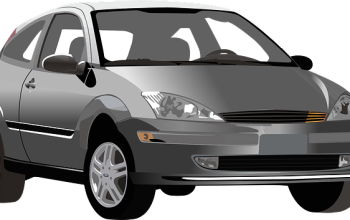Auto insurance protects against driving risks through collision, comprehensive, and liability coverages, with state minimum requirements evolving, especially in California, mandating higher limits. Balancing these coverages and deductibles is key; collision and comprehensive cater to different risks, while deductibles impact monthly premiums and out-of-pocket costs for repairs. Drivers should assess their driving habits, vehicle conditions, location, and financial health to customize policies, prioritizing protection without overspending or unnecessary coverage.
In an era marked by escalating auto insurance rates, navigating the complexities of coverage options has become a critical task for every driver. This article serves as your comprehensive guide to securing the ideal balance between collision, comprehensive, and deductible choices, especially with evolving state regulations like California’s stricter minimum requirements. By delving into the nuances of liability insurance, full coverage, and beyond, we aim to empower readers to make informed decisions, ensuring they get the best protection without unnecessary costs.
- Understanding Auto Insurance Basics: Coverage Types Explained
- The Impact of State Minimum Requirements on Your Policy
- Balancing Collision vs. Comprehensive: What's Right for You?
- Deductible Options: How They Affect Your Wallet and Coverage
- Tips for Evaluating Your Auto Insurance Needs and Saving Money
Understanding Auto Insurance Basics: Coverage Types Explained

Auto insurance is a complex landscape, but understanding the basics and different coverage types is essential for making informed decisions. At its core, auto insurance is a contract between you and an insurance company that provides financial protection against specific risks associated with driving. The policy outlines what’s covered in case of accidents, theft, or damage to your vehicle.
There are primarily three types of coverages: collision, comprehensive, and liability. Collision coverage pays for repairs or replacement if your car is damaged in a crash, regardless of fault. Comprehensive coverage protects against damages from events like theft, vandalism, or natural disasters. Liability insurance covers the cost of damage or injury you may cause to others in an accident, up to specific limits. Balancing these coverages and deductibles is key to finding the right protection for your vehicle while staying within your budget.
The Impact of State Minimum Requirements on Your Policy

With recent changes in state minimum requirements, auto insurance policies across states like California are undergoing a significant shift. These new guidelines directly influence what coverages and deductibles drivers must consider when purchasing their policy. As a result, understanding these minimums is crucial to ensuring adequate protection for your vehicle without paying for unnecessary extras.
For instance, increased minimum liability limits require drivers to carry higher coverage amounts for both bodily injury and property damage. This means that if you’re involved in an accident, the insurance will cover more of the damages and medical bills. However, it also translates to higher premiums. Therefore, drivers must balance their need for comprehensive protection with their financial capabilities, selecting options that align with state mandates while keeping their costs manageable.
Balancing Collision vs. Comprehensive: What's Right for You?

Collision coverage and comprehensive coverage are two essential components of an auto insurance policy, but they serve distinct purposes. Collision coverage protects your vehicle from damage caused by accidents, while comprehensive coverage shields you from a broader range of risks, including theft, vandalism, and natural disasters. The right balance between these two depends on your individual needs and driving habits.
If you tend to drive cautiously and park in secure locations, comprehensive coverage might be sufficient. However, if you frequently encounter hazardous road conditions or live in an area prone to certain perils, collision coverage becomes crucial. Reviewing your vehicle’s age, condition, and repair costs can also help determine the optimal balance. By carefully assessing these factors, you can tailor your policy to protect your investment without paying for unnecessary protections.
Deductible Options: How They Affect Your Wallet and Coverage

Deductibles are the amount you pay out-of-pocket before your insurance kicks in. A higher deductible means lower monthly premiums, as you’re taking on more financial responsibility. However, this also means you’ll have to cover a larger portion of repair costs upfront if you’re in an accident. Lower deductibles offer better protection against unexpected expenses but come at the cost of slightly higher monthly payments. When choosing a deductible, consider your budget and the likelihood of needing to file a claim. If you’re risk-averse or live in an area prone to accidents, a lower deductible might be worth the extra expense for peace of mind. Conversely, if you drive carefully and live in a safe neighborhood, opting for a higher deductible could save you money in the long run.
Tips for Evaluating Your Auto Insurance Needs and Saving Money

When evaluating your auto insurance needs, start by assessing your driving history and the type of vehicle you own. If you have a clean record and drive a mid-range car, you might be eligible for lower rates with basic liability coverage. However, if you frequently drive in adverse weather conditions or have a high-value vehicle, comprehensive and collision coverages could offer better protection despite the higher premiums.
Consider your budget and emergency funds before making decisions. Raising your deductible can significantly reduce costs but ensure it’s an amount you’re comfortable paying out-of-pocket in case of an accident. Shop around for quotes from multiple insurers to compare rates, and don’t be afraid to negotiate or switch policies if you find a better deal that aligns with your risk profile and financial capabilities.
In today’s evolving insurance landscape, staying informed is key to protecting your investment. By understanding the various coverage options, keeping pace with state regulations, and balancing your needs with budget, you can navigate the auto insurance maze with confidence. This article has provided valuable insights into the essential elements of auto coverage, empowering you to make informed decisions and secure the best possible protection for your vehicle without unnecessary expense. Remember, a well-informed policy choice is a step towards financial security and peace of mind on the road ahead.



